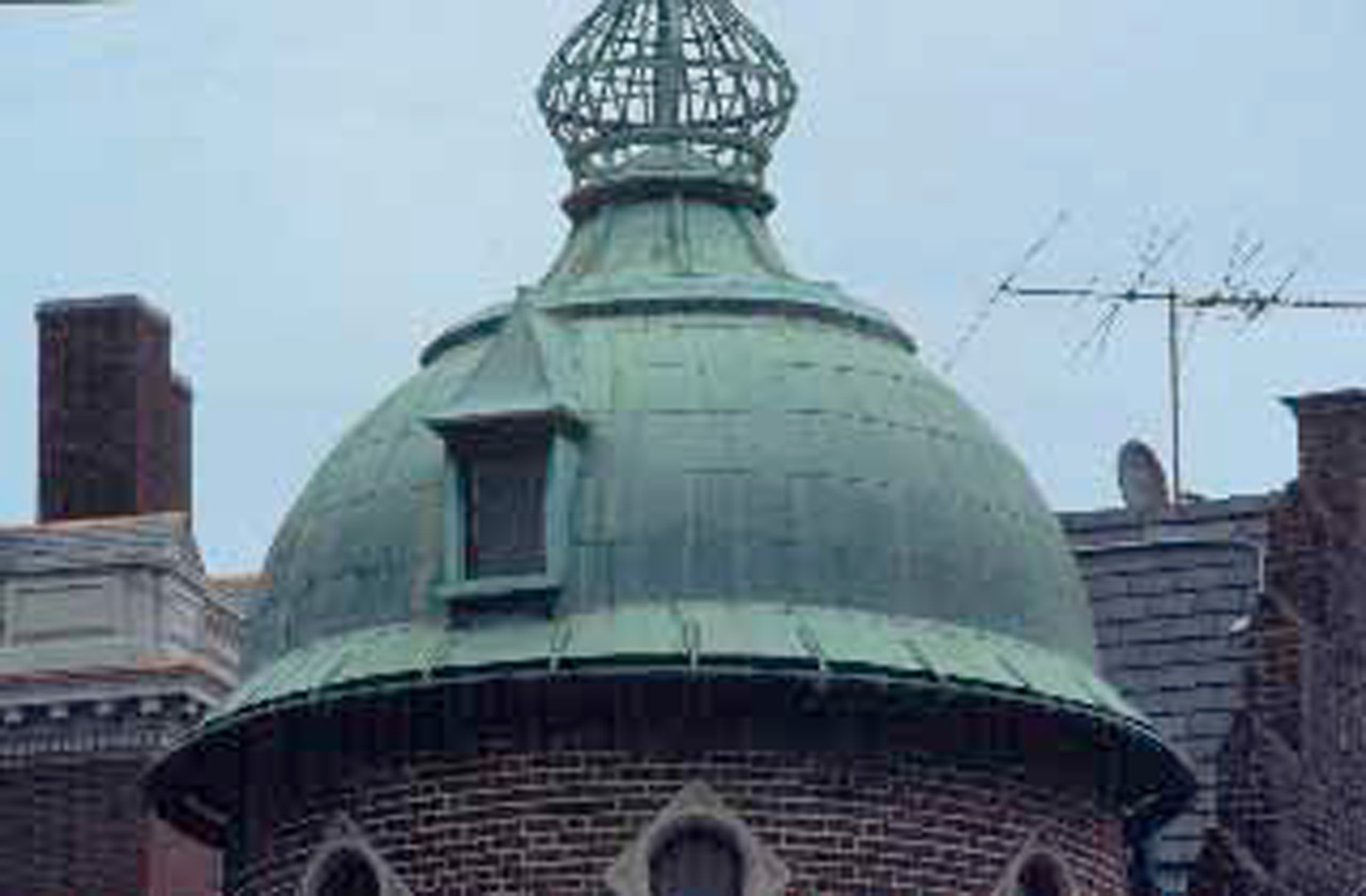“Modeling and rendering of metallic patinas” by Dorsey and Hanrahan
Conference:
Type(s):
Title:
- Modeling and rendering of metallic patinas
Presenter(s)/Author(s):
Abstract:
An important component that has been missing from image synthesis is the effect of weathering. In this paper, we present an approach for the modeling and rendering of one type of weathering — metallic patinas. A patina is a film or incrustation on a surface that is produced by the removal of material, the addition of material, or the chemical alteration of a surface. Oxidation, sulphidization, and painting are examples of phenomena that produce patinas. We represent a surface as a series of layers. Patinas are simulated with a collection of operators, such as “coat,” “erode,” and “polish,” which are applied to the layered structure. The development of patinas is modulated according to an object’s geometry and local environmental factors. We introduce a technique to model the reflectance and transmission of light through the layered structure using the Kubelka-Munk model. This representation yields a model that can simulate many aspects of the time-dependent appearance of metals as they are exposed to the atmosphere or treated chemically. We demonstrate the approach with a collection of copper models.
References:
1. BARABASI, A. L., AND STANLEY, H. E. Fractal Concepts in Smface Growth. Cambridge University Press, Cambridge, 1995.
2. BECKET, W., AND BADLER, N. I. Imperfection for realistic image synthesis. Journal of Visualization and Computer Animation 1, 1 (Aug. 1990), 26-32.
3. BLINN, J. F. Light reflection functions for simulation of clouds and dusty surfaces. Computer Graphics 16, 3 (July 1982), 21-29.
4. COOK, R. L. Shade trees. Computer Graphics 18, 3 (July 1984), 223-231.
5. DORSEY, J., PEDERSEN, H. K., AND HANRAHAN, P. Flow and changes in appearance. In Computer Graphics P~vceedings (1996), Annual Conference Series, ACM SIGGRAPH.
6. EBERT, D. S., Ed. Texturing and Modeling. Academic Press, New York, 1994.
7. FLEMING, S. J. Dating in Archaeology. St. Martin’s Press, New York, 1977.
8. FRANEY, J. P., AND DAVIS, M. E. Metallographic studies of the copper patina formed in the atmosphere. Corlvsion Science 27, 7 (1987), 659-688.
9. FRENCH, L. Toy story. Cinefantastique 27, 2 (1995), 36-37.
10. GRAEDEL, T. E. Copper patinas formed in the atmosphere – a qualitative assessment of mechanisms. Corlvsion Science 27, 7 (1987), 721-740.
11. GRAEDEL, T. E., NASSAU, K., AND FRANEY, J. P. Copper patinas formed in the atmosphere. Corlvsion Science 27, 7 (1987), 639-652.
12. HAASE, C. S., AND MEYER, G. W. Modeling pigmented materials for realistic image synthesis. ACM Tran. Graphics 11, 4 (Oct. 1992), 305-335.
13. HANRAHAN, P., AND KRUEGER, W. Reflection from layered surfaces due to subsurface scattering. In Computer Graphics P~vceedings (1993), Annual Conterence Series, ACM SIGGRAPH, pp. 165-174.
14. HANRAHAN, P., AND LAWSON, J. A language for shading and lighting calculations. Computer Graphics 24, 4 (Aug. 1990), 289-298.
15. HSU, S., AND WONG, Y. Simulating dust accumulation. IEEE Computer Graphics and Applications 15, 1 (Jan. 1995), 18-22.
16. HUGHES, R., AND ROWE, M. The Colouring, B~vnzing and Patination of Metals. Watson-Guptill Publications, New York, 1991.
17. JUDD, D. B., AND WYSZECKI, G. Color in Business, Science, and Industry. John Wiley & Sons, New York, 1975.
18. KORTUM, G. Reflectance Spect~vscopy. Springer-Verlag, New York, 1969.
19. KUBELKA, P. New contributions to the optics of intensely light-scattering material, part I. J. Opt. Soc. Am. 38 (1948), 448.
20. KUBELKA, P. New contributions to the optics of intensely light-scattering material, part II: Non-homogeneous layers. J. Opt. Soc. Am. 44 (1954), 330.
21. KUBELKA, P., AND MUNK, F. Ein beitrag zur optik der farbanstriche. Z. tech. Physik. 12 (1931), 593.
22. MATTSSON, E. Basic Cor~vsion Technology for Scientists and Engineers. Ellis Horwood Limited, New York, 1989.
23. MILLER, G. Efficient algorithms for local and global accessibility shading. In Computer Graphics P1vceedings (1994), Annual Conference Series, ACM SIG- GRAPH, pp. 319-326.
24. MOSTAFAVI, M., AND LEATHERBARROW, D. On Weathering: The Life of Buildings in Time. MIT Press, Cambridge, MA, 1993.
25. NEWMAN, R. C., AND SIERADZKI, K. Metallic corrosion. Science 263 (1994), 1708-1709.
26. PERLIN, K. An image synthesizer. Computer Graphics 19, 4 (July 1985), 287- 296.
27. PORTER, T., AND DUFF, T. Compositing digital images. Computer Graphics 18, 3 (July 1984), 253-259.
28. SIMPSON, J. W., AND HORROBIN, P. J. The Weathering and Pelformance of Building Materials. MTP Publishing Co, London, 1970.
29. THOMAS, T. R., Ed. Rough Smfaces. Longman, New York, 1982.
30. TURK, G. Generating textures for arbitrary surfaces using reaction-diffusion. Computer Graphics 25, 4 (July 1991), 289-298.
31. UPSTILL, S. The Renderman Companion. Addison-Wesley, New York, 1990.
32. VERNON, W. H. J., AND WHITBY, L. The open air corrosion of copper, a chemical surface patina. Journal Instit. of Metals 42, 6 (1932), 181-195.
33. WITKIN, A., AND KASS, M. Reaction-diffusion textures. Computer Graphics 25, 4 (July 1991), 299-308.




